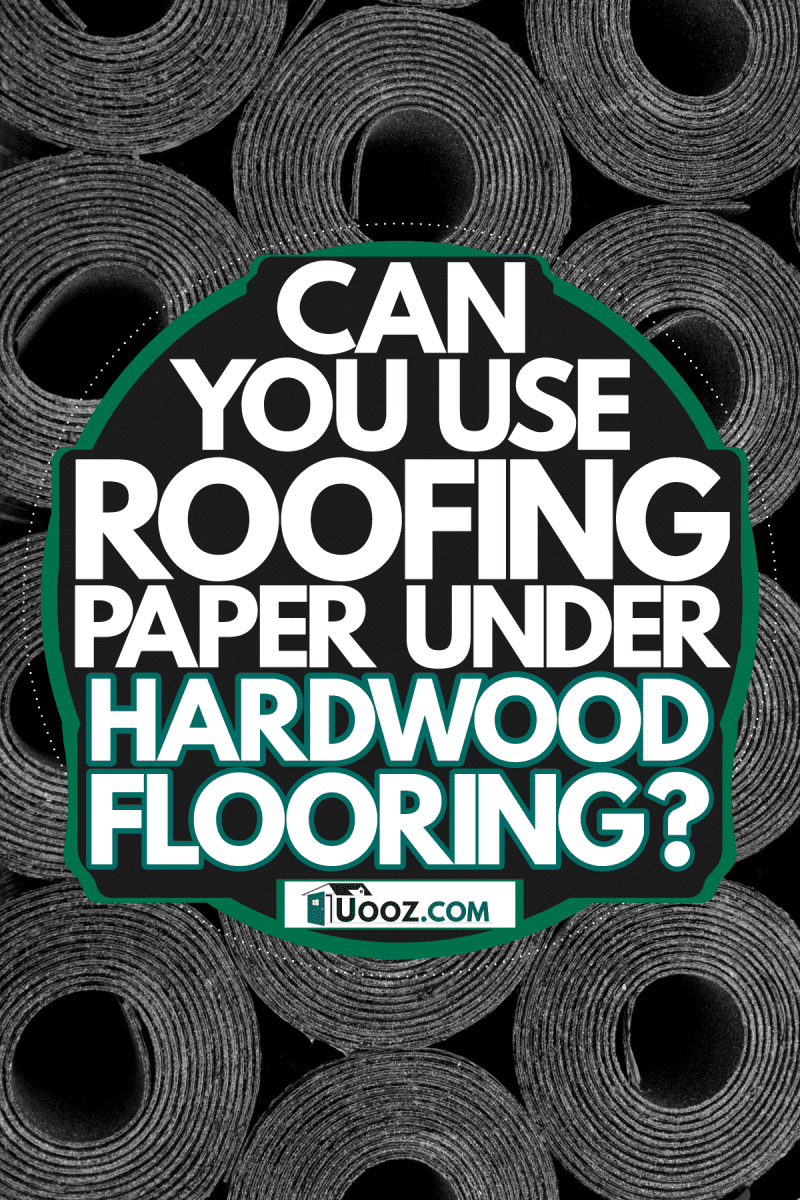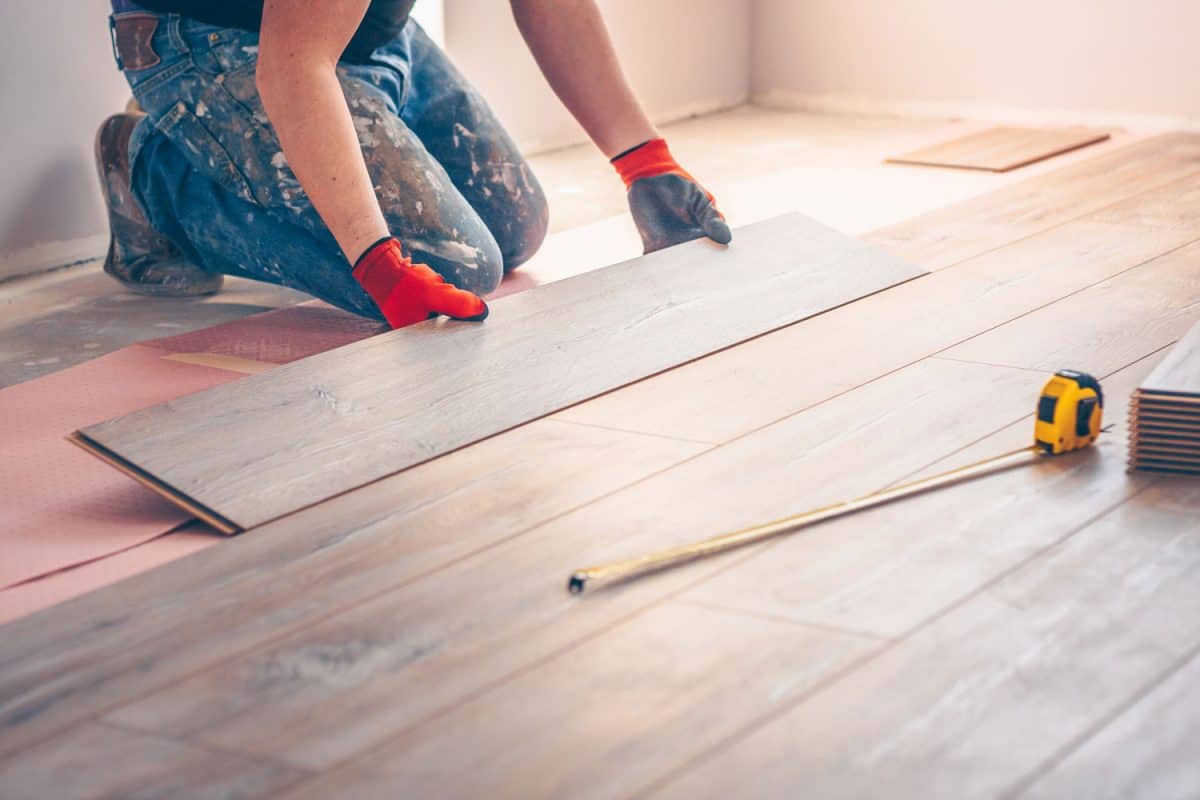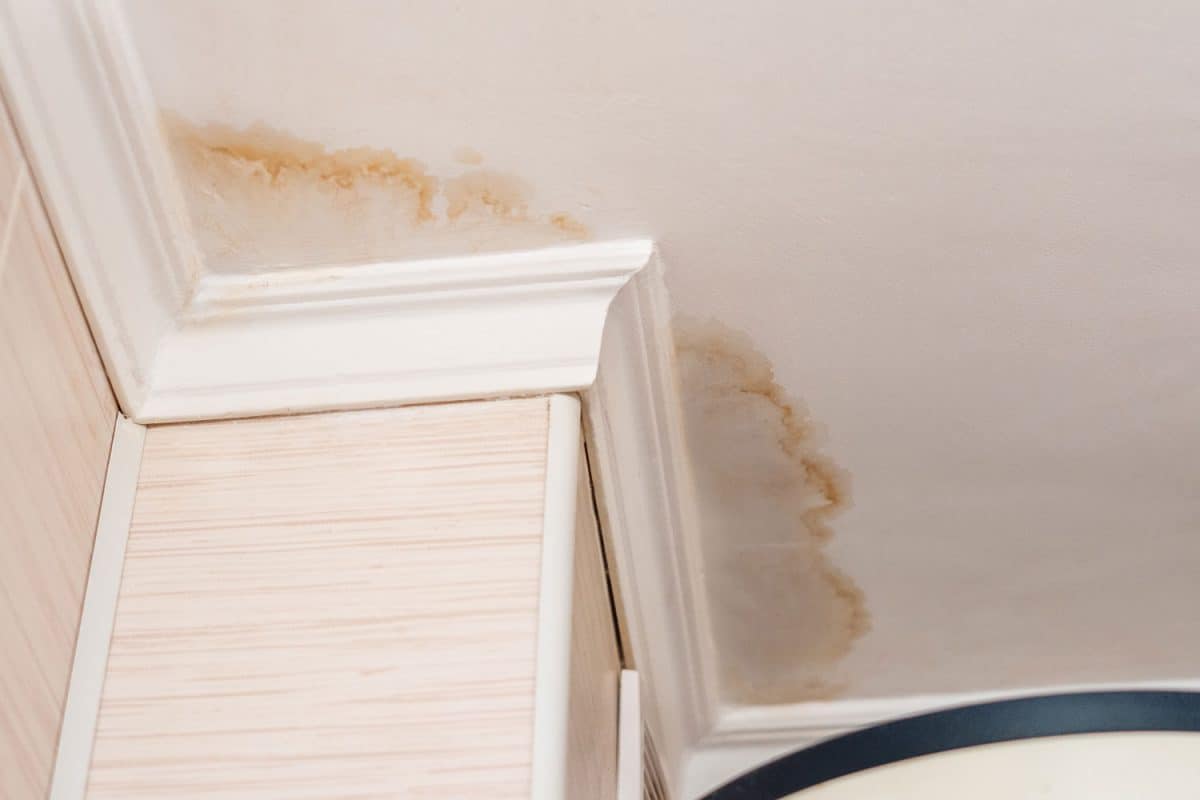Hardwood is a gorgeous, long-lasting choice for any home, but if you're thinking of installing this flooring yourself, the truth is that you may be left with a lot of questions. One could be whether roofing paper can be used for hardwood flooring. It seems to be the same as underlayment paper, and if you have some lying around, why not? We've done the research to answer this question for you.
Roofing paper should not be used under hardwood flooring. Due to its bituminous materials, it could begin to exude an unpleasant odor and even be toxic for your family. Instead, rosin or felt underlayment paper is appropriate.
So now you know that roofing paper probably isn't the best choice for your flooring project, but maybe you want to know more, including what you can use instead. Keep reading to learn more.

Using Paper Under Hardwood
Why do you need paper under your hardwood, anyway? If you've ever been in an older home with multiple levels, you've probably noticed just how loud someone walking on an upper floor can be.
This is because underlayment paper wasn't always used in past generations, and one of its primary purposes is to create a sound barrier. Nobody enjoys a house with a lot of squeaks and creaks.
Besides being annoying, it can also be a bit creepy and doesn't add any homey feels. The quieter the house, the sounder the construction seems to be.
Another purpose of underlayment paper is to create an additional moisture barrier. Hardwood floor certainly isn't waterproof. Because of this, even small spills could pose a problem.
The moisture barrier provided by the underlayment paper will prevent any issues caused by spills and minor flooding.
Why Not Roofing Paper?
Roofing paper is essentially underlayment for roofing shingles, and it's incredibly durable, protective, and water-resistant.
Also called "tar paper," roofing felt paper is made from fiberglass infused with bituminous materials. Bitumen is not tar but is more resistant than tar. It is also used in the production of asphalt mixes.
So why can't you use this amazingly durable material beneath your floor? If you've ever smelled asphalt as it's curing, that may be reason enough for you. The smell of the material can be very unpleasant and overwhelming.
Besides the unbearable smell, the fumes can also be toxic. Side effects of inhaling these fumes can be cough, headache, fatigue, reduced appetite, skin rash, throat and eye irritation, and even cancer.
Of course, this is a problem usually only encountered by road construction workers, roofing installers, or manufacturing employees. Still, it is one that you could bring upon yourself if you use roofing paper beneath your hardwood flooring.
What Kind Of Paper Goes Under Hardwood Flooring?
While roofing paper is not appropriate, a paper created specifically for indoor construction purposes is a good choice for hardwood flooring underlayment.
Rosin Paper
Rosin paper is pink or red sheathing paper. It may not seem particularly protective upon looking at it, but rosin is a glazing ingredient and is exceptionally water-resistant.
It should be laid before the hardwood and applied to the subfloor with an adhesive. This should all be done as preparation before installation.

While thicker than paper for recreational use, Rosin paper is not as effective at preventing sound carrying as it is at providing a moisture barrier. Still, it is a perfectly acceptable option and easy to use.
Take a look at this rosin paper we found on Amazon.
Felt Paper
Felt paper is also a good option for flooring underlayment. It should be noted that while the felt paper does also contain bituminous materials, it is coated with a vapor shield that roofing paper does not have, making it both comfortable and safe for indoor use.
Some felt paper would need to be applied to the subfloor with an adhesive, but some are already equipped with a self-adhesive.
This felt paper is water-resistant due to the asphalt coating, and it's also thicker than rosin paper and allows for a great sound barrier. No squeaks and creaks with this underlayment!
Check out this felt underlayment paper with a vapor barrier we found on Amazon.
What Is Best To Put Under Hardwood Floors?
Felt paper is probably the overall best choice for hardwood underlayment. It's extremely water-resistant due to its bituminous materials, it includes a vapor shield to prevent unpleasant and unsafe fumes, and it's very thick, making for a great sound barrier.
On the other hand, roofing paper lacks the vapor shield, making it smelly and potentially unsafe. And rosin paper lacks the thickness of felt paper, making it less effective at preventing noisiness. Felt paper truly has the best performance of all three.
Related Questions
Is Underlayment Necessary For Hardwood Floors?
Underlayment is not precisely necessary for hardwood floors, but it certainly will make the flooring more comfortable and could save you money in repairs from water damage. Hardwood floors are hard, and underlayment will give it a nicer feel underfoot while also providing a moisture barrier.
In addition, you don't always have to install the underlayment yourself to have it. Some hardwood planks are equipped with underlayment already attached!
What Happens If I Don't Use Underlayment?
The least that will happen if you don't use underlayment under your hardwood flooring is that you will have a very creaky and somewhat uncomfortable floor.
The worst that will happen is that you could have water damage to the subfloor and subsequent damage to the lower floor ceilings over time. Subfloor is also meant to prevent leaks, but it's not always the most reliable, especially as it ages and is repeatedly exposed to the elements of home life. So installing an underlayment is always a wise decision.

If the manufacturer of your chosen hardwood planks recommends a vapor barrier, we highly recommend using underlayment to protect the planks as well. Not all hardwood planks are created equal, and it could be that this wood also needs extra protection from pooling water or moisture.
Can I Lay Hardwood Over Existing Hardwood?
In some cases, yes, you can. In many instances, this can be a much better option than removing the older hardwood flooring. The original hardwood flooring could be installed in a way that makes it unsafe or unnecessary to remove.
This may especially be true with nailed-down hardwood in older homes. The hardwood could have been installed without the use of a subfloor.
In this process, the existing hardwood becomes the substrate on which you will be laying a new floor. You will treat it as the subfloor.
The best way to move forward is to assess the existing hardwood and ensure no significant structural issues. Also, you want to be sure that the previous flooring was nailed down and not glued down. In which case, you may have to remove it and start from scratch.
In Closing
Installing your hardwood flooring is undoubtedly a hefty task, even for seasoned homeowners and handymen. In recent years, there have been more steps and more methods added to installing hardwood flooring, which can make it a bit confusing as you prepare.
One of your questions may have been what underlayment to use beneath hardwood flooring and whether roofing paper was appropriate. While we concluded that roofing paper was not the best or safest choice, we found that rosin paper and felt paper were. Felt paper seemed to be the best option, as both a moisture shield and sound barrier.
As you move forward with your flooring project, we wish you luck, and we're sure that your hardwood will be beautiful and enduring!
Want to learn more about hardwood flooring installation? Visit these related posts:
Should You Change Direction Of Hardwood Flooring Between Rooms?


